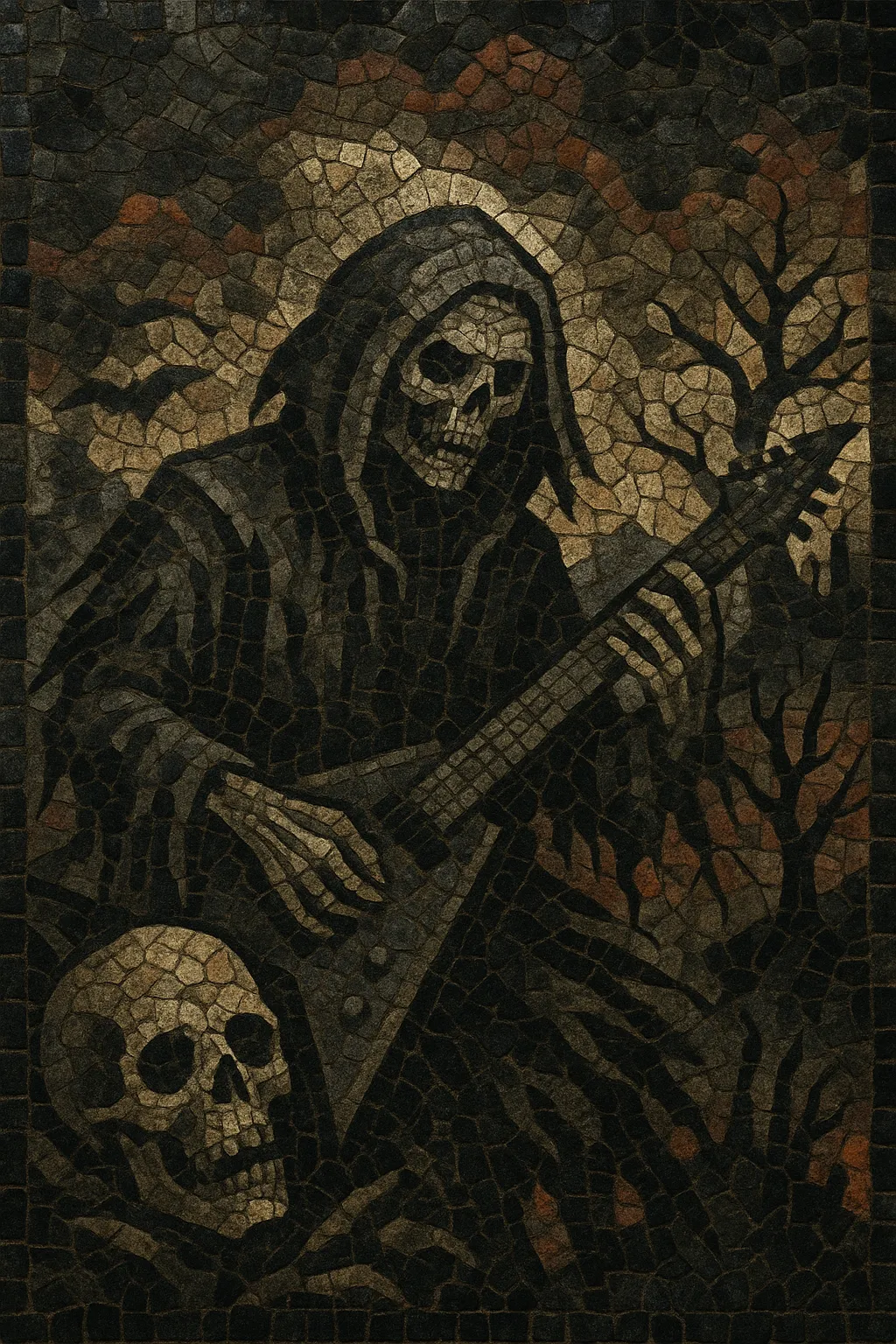Stenchcore is a dark, metallic strain of crust punk that emerged in the mid-1980s United Kingdom. It blends the d-beat drive and political urgency of anarcho/crust punk with the weight, riffing vocabulary, and atmosphere of early extreme metal.
The style is characterized by downtuned, overdriven guitars; mid-to-fast d-beat and double-time passages interspersed with slower, doomy sections; and a bleak, apocalyptic mood cemented by cavernous, murky production. Lyrics typically address war, environmental collapse, authoritarianism, and existential dread, delivered through harsh, barked vocals. The name “stenchcore” nods both to the grimy, reverb-heavy sound and to the macabre, death-tinged imagery common in artwork and themes.
Stenchcore coalesced in the UK during the mid-1980s as bands from the anarcho/crust milieu pushed toward a heavier, more foreboding sound. Acts like Amebix and Antisect laid the groundwork by fusing hardcore urgency with ominous, metallic riffing and desolate atmospheres. Deviated Instinct, Axegrinder, and Sacrilege further hardened the template—slowing tempos into doomy stomps, embracing thick low-end, and adopting stark, apocalyptic visuals. Fanzines and bands began referring to this particularly grimy, metal-inflected branch of crust as “stenchcore.”
Sonically, stenchcore emphasized downtuned guitars, d-beat rhythms, and melancholic or minor-key riffs that nodded to early doom and thrash metal. Production values often remained raw and reverb-heavy, accentuating an underground, cavern-dwelling feel. Thematically, lyrics turned toward anti-war polemics, ecological catastrophe, and social decay—an ethos inherited from anarcho-punk, but delivered with a darker, more fatalistic tone.
While some first-wave groups disbanded or evolved, their influence persisted across crust and extreme metal. In the late 1990s and 2000s, a notable revival arose internationally: bands in the US, Japan, Germany, and Scandinavia embraced the original UK template—thick riffs, d-beat propulsion, and morbid atmosphere—while modernizing recording techniques. Hellshock, Effigy, Instinct of Survival, and others kept the style visible and influential.
Stenchcore’s hybrid DNA—crust punk urgency fused with doom/thrash sonics—helped shape later intersections of crust and extreme metal. Its mood, riff language, and political bleakness echoed into blackened crust, death-doom-adjacent crust variants, and politically charged fusions of metal and punk.


